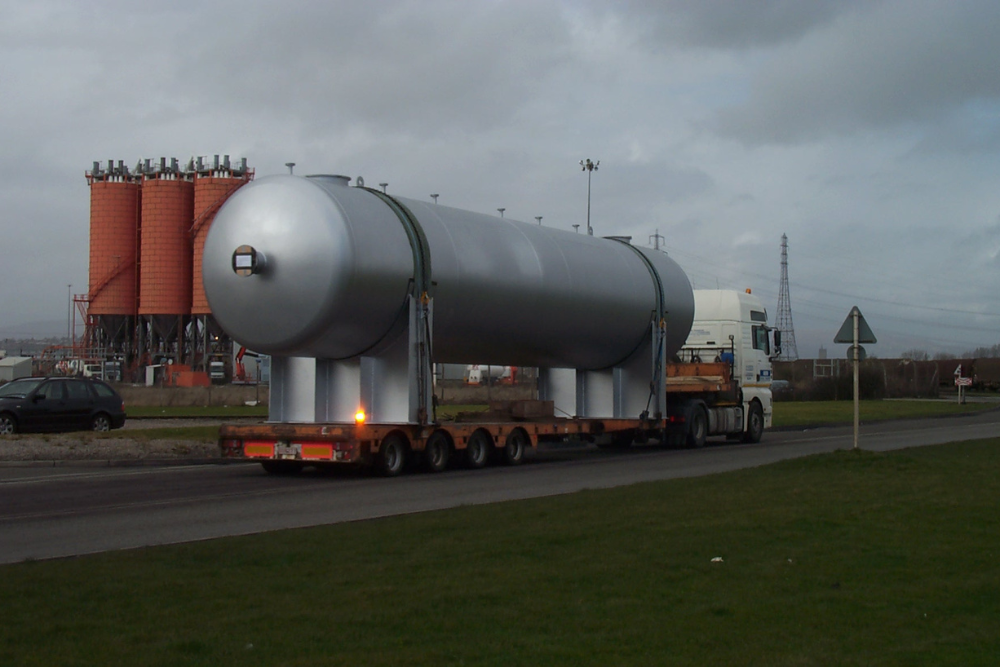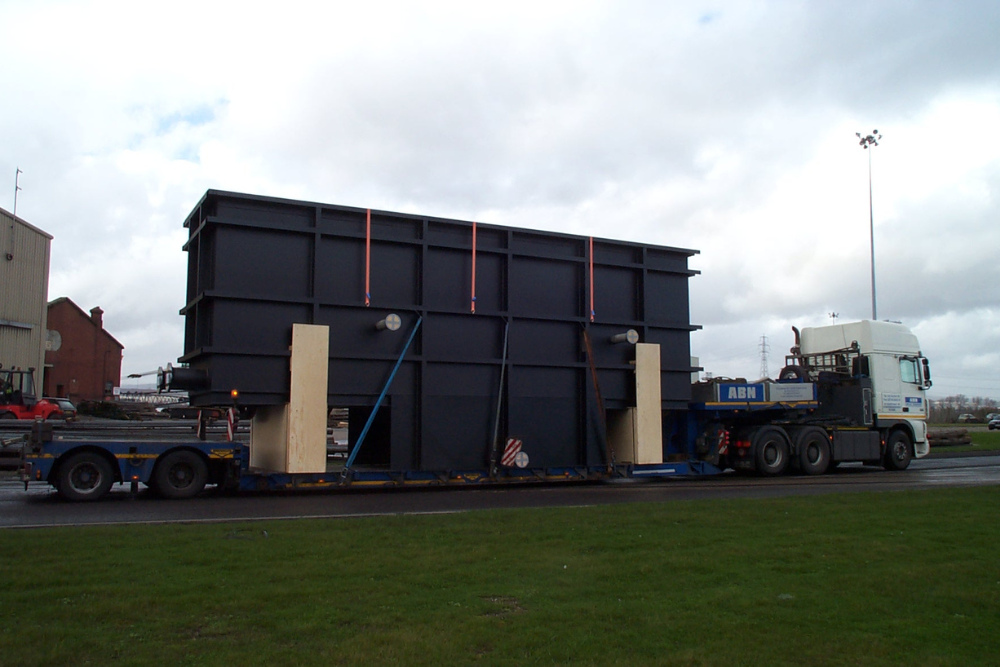Breakbulk cargo plays a significant role in global trade. Unlike containerised shipments, which are stored and moved in standardised containers, breakbulk involves transporting cargo in a more traditional and flexible manner. But what exactly does breakbulk mean, and how does it work in modern logistics?
In this article, we’ll explore the meaning of breakbulk shipping, the types of goods it handles, and why it remains a vital mode of transport despite the rise of container shipping. We’ll also look at how breakbulk logistics operates, the benefits, and when it might be the best choice for your cargo.
What does Breakbulk mean?
Breakbulk, or break bulk, refers to cargo that is transported individually rather than being packed into shipping containers. The term dates back to the early days of maritime trade when ships were loaded with goods that were ‘broken’ apart from bulk cargo like oil or grain and handled as separate pieces. Unlike bulk cargo that’s stored in large quantities in the ship’s hold, breakbulk cargo is usually unitised, meaning it’s divided into distinct pieces.
Breakbulk shipping involves handling cargo that can’t easily fit into containers due to its size, shape, or special handling requirements. This includes items like machinery, construction equipment, steel girders, large pipes, vehicles, and timber. These goods are often loaded directly onto the ship using cranes or other lifting equipment and are secured individually.

Breakbulk cargo: what types of goods are shipped?
When it comes to breakbulk cargo, the types of goods shipped are typically those that cannot be containerised due to their size, shape, or handling requirements. Breakbulk is the preferred shipping method for large, heavy, and irregularly shaped items, as well as cargo that needs special handling or secure storage. These goods range from industrial machinery and vehicles to construction materials like steel beams and timber.
In industries such as manufacturing, construction, and energy, breakbulk shipping is indispensable for transporting oversized items that simply don’t fit within the confines of a standard container. Typically, breakbulk shipments include:
Heavy machinery and industrial equipment: Large construction machines, cranes, turbines, and parts that are too large for standard containers.
Vehicles: From cars to trucks and even railway equipment.
Steel and metal products: Items like girders, pipes, and structural materials for construction.
Forest products: Timber, logs, and lumber.
Project cargo: Unique, oversized items that require specialised transport, such as wind turbines, or parts for large infrastructure projects.
These types of goods can’t be containerised due to their size, irregular shape, or handling needs, making breakbulk the only viable shipping option.
How does Breakbulk shipping work?
Breakbulk shipping differs from standard container shipping, primarily in its handling processes. Whereas containerised cargo is loaded and unloaded via cranes that lift entire containers, breakbulk cargo is handled as individual pieces.
Typically, this involves:
- Cargo is often palletised, crated, or otherwise packaged for protection during transit. Items are individually weighed and measured to ensure they are handled correctly.
- Heavy-lift cranes or derricks are used to load and unload each piece of cargo. It’s an operation that demands precision, as breakbulk items are usually heavy, irregular, or fragile.
- Breakbulk cargo is carefully arranged in the ship’s hold to maximise space and ensure secure transit. Each item is secured with special rigging to prevent shifting during the voyage.
- Given the individual nature of the items, customs clearance for breakbulk often involves more paperwork compared to containerised goods, as each piece of cargo is treated separately.
This process requires specialised expertise, as poorly secured cargo can shift during transit, resulting in damage or even endangering the vessel. That’s why breakbulk shippers often use advanced securing techniques like lashing, dunnage, and additional rigging to ensure the safe transport of the cargo.
Why use Breakbulk shipping?
You might wonder why, with the rise of containerisation, breakbulk shipping is still used today. While containers dominate global trade, there are specific scenarios where breakbulk is the preferred choice:
Oversized or irregular cargo
Certain cargo simply doesn’t fit into standard containers. Large machinery, construction materials, and equipment often exceed the size or weight limits for containers, making breakbulk the only viable option.
Flexible loading options
Breakbulk shipping offers flexibility in how cargo is handled. Each item can be tailored to the specific requirements of the shipper. This flexibility is especially important for project cargo, where each shipment may involve custom-built items with unique dimensions or handling requirements.
Remote destinations
Breakbulk shipping is often more accessible for certain ports, particularly in developing countries or remote regions that may not have the infrastructure to handle large container ships. In these cases, breakbulk vessels, which can operate in smaller ports, are ideal.
Multiple consignees
Breakbulk allows cargo to be delivered to multiple consignees at different ports along the shipping route. For example, a vessel carrying steel might unload part of its cargo in Rotterdam and the rest in Hamburg, which is more challenging with containerised shipping.
Breakbulk vs. Containerisation
The methods used to transport goods have undergone significant transformations, with two major approaches dominating the landscape: breakbulk and containerisation. Each of these methods has distinct characteristics, and advantages, reflecting the diverse needs of global trade.
Breakbulk shipping has been a cornerstone of international trade for centuries, offering flexibility and the ability to handle oversized or irregularly shaped items that don’t fit neatly into standard containers. In contrast, containerisation represents a modern advancement in cargo shipping and has become the dominant method of shipping. This is largely due to its ability to accommodate a wide range of cargo in a uniform and predictable manner.
While breakbulk shipping has its advantages, containerisation remains the dominant force in global logistics for a few key reasons:
Efficiency: Containers can be easily loaded, unloaded, and transferred between ships, trucks, and trains without the need to unpack the cargo. This speeds up the shipping process and reduces labour costs.
Security: Goods in containers are better protected from theft and damage since they are sealed in standardised units.
Cost: In many cases, container shipping is more cost-effective than breakbulk because of its standardised handling and economies of scale.
However, when it comes to shipping oversized, irregular, or heavy cargo, breakbulk offers unmatched flexibility and specialised handling that containers cannot.
Breakbulk shipping today: trends and statistics
While breakbulk shipping may seem like an old-fashioned mode of transport, it remains essential, especially for certain industries like construction, manufacturing, and energy. According to market research, the breakbulk cargo sector has been witnessing steady growth due to the rise in project cargo, especially for energy and infrastructure projects across the globe.
For example, the wind energy sector, with its demand for large turbines and components, has significantly boosted the need for breakbulk services. The market is forecast to grow further as global investment in infrastructure projects continues.
Breakbulk shipping plays a vital role in the global logistics landscape, particularly for industries that deal with oversized or heavy goods. Understanding the breakbulk meaning and how breakbulk cargo is handled can help businesses make informed decisions when it comes to transporting their goods. As global trade continues to evolve, breakbulk shipping will remain a key player in sectors such as energy, construction, and heavy manufacturing, ensuring that the most challenging cargo reaches its destination safely.
If you’re looking for breakbulk shipping solutions tailored to your needs, we have the expertise and global network to ensure your cargo arrives securely and on time. Get in touch with us today to discuss your requirements. And for all of the latest AGI news, don’t forget to follow us on LinkedIn and Facebook!
